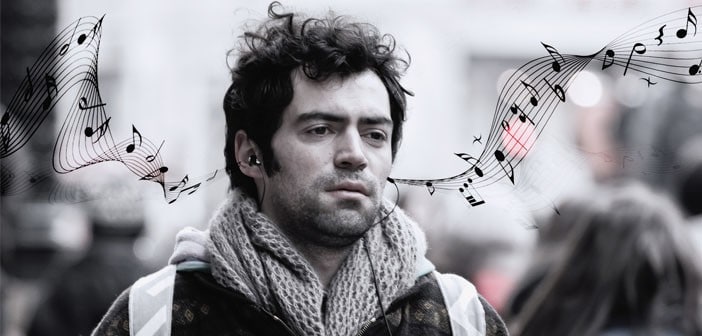Editor’s note: This 10-part series by Bob Martin, AuD, began in the Hearing Health. As The Audiology Condition is so new, all of the posts are “Best of” for 2015!
So far, I have discussed Kim, David, Dr. Judy, Sam, Michael & Ann, and Sandy. I saved my most challenging miracle for last.
Today I want to tell you Jessica’s story. Jessica is a schoolteacher who leads a very active life that requires her to hear well in many different situations. That is a major challenge, since she has poor hearing. Her former hearing aids helped, but they were just no match for her demanding lifestyle, she told me when she came to my office.
“Let’s start with my job,” she replies when I ask her what she needed.
“Due to budget cuts, we now have combined classes at school,” she says. “Sometimes I teach 80 to 100 kids in one large class. With my hearing aids I can only hear the students seated in the front of the room. I cannot understand or respond when a kid sitting in the middle or back rows of the class asks me a question.”
She adds, “Also, several times a month, I have to supervise the students in the cafeteria. The noise is horrible! It is absolutely impossible for me to carry on a conversation.”
I also have problems at church,” she says, growing more and more exasperated. “My church has a good sound system, and I hear the sermon okay. But I can’t stand the quality of the music, and I don’t like the sound of my voice when I sing in the choir.”
“I don’t like listening to music at home any more, either. The only way I can enjoy music is to turn on my old Walkman player. I take off my hearing aids, put on an old headset, and crank the volume up loud.”
“Then there’s my cell phone. That little magnet you gave me to make my hearing aid automatically switch to telephone mode doesn’t work. I gave up trying to use it. So I put my cellphone on speaker and do my best.
“Let’s see, what else? Oh, I have trouble hearing the TV. My son is difficult or impossible to understand. And when I go to my brother’s house the barking of his dogs drives me crazy. There,” she says, finishing her diatribe. “Is that enough for you?”
POWERFUL SOLUTIONS FOR SERIOUS PROBLEMS
I listened carefully, conducted a new hearing test, and ran real-ear measurements to see how much amplification she was experiencing. After I did that, I could hardly control my excitement! Jessica’s lifestyle and the degree of her hearing loss were perfect for a miracle! Looking at her hearing aid fitting and knowing the capacity of new hearing aids, I could see many ways to improve her hearing dramatically. With a little luck and a lot of work, we could make this miracle happen.
Let’s examine this patient’s numerous hearing needs, one by one, and then present solutions to address each of them.
- Hearing distant voices: As a teacher, Jessica needs to hear students speaking from the back row of the classroom. That requires markedly increasing the bandwidth in program #1, as discussed in Judy’s story.
- Noise reduction so she can converse in the cafeteria: Employ narrow-zone hearing, using a microphone array set to the minimum field in program 2 or 3. Occluding earmolds act as noise plugs. This was discussed in Kim’s story.
- Singing in the choir: Create a special music program with a smooth response. Use minimum automatic gain control (AGC) settings, and de-activate most automatic features. Details are discussed below.
- Listening to music from her IPad: Connect her streamer to her IPad by wire. Create a music program.
- Using a cellphone: Connect Bluetooth to her streamer, with the microphones de-activated. Discussed in David’s story.
- Watching television: Increase bandwidth. Discussed in Judy’s story.
- Tolerating the barking of her brother’s dogs: Use the noise-reduction program, and set the AGC carefully. Discussed below.
If you have read the previous installments in this series, you know how most of the miracles that Jessica needs can be provided. Earlier posts discussed bandwidth, noise reduction, and cell phone use. But we have not talked about listening to music through hearing aids, so let’s do that now.
Most high-tech features in hearing aids are designed either to help patients understand speech or to keep them comfortable when they are using amplification. When used appropriately, these features are wonderful. However, they are worse than useless in a hearing aid music program. If you leave these features on, they will distort the music.
Programming hearing aids is not a job for an amateur, nor can it be done effectively automatically using “first fit” software. The professional adjusting the hearing aids has to know what he or she is doing.
Our last task was solving the “barking dog” problem. For this, Jessica uses her hearing aids’ noise-reduction program to reduce environmental sounds. In addition, I took great care in selecting the AGC settings (thresholds and compression ratios) to ensure that the loud barking would no longer be intolerable for her.
Bingo! Jessica, our teacher, is now able to hear in places that, until recently, were impossible for her: in the cafeteria, in her choir, and from the back of her classroom. This fitting took many office visits and a lot of work. We succeeded, thanks to fantastic hearing aids that, when properly fitted, can work miracles.
Next time in the conclusion of this series on Winning the War Against Hearing Loss, I will discuss the technology behind these miracles.
photo credit Hernán-Piñera-Creative-Commons-702×336








